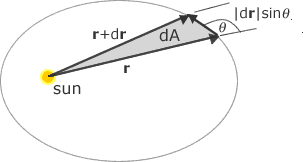
Mathematics like Leonhard Euler and Joseph-Louis Lagrange used infinitesimals routinely in the 18th century. Leibniz's use of infinitesimals depends on heuristic principles, such as the law of continuity: what succeeds for the finite numbers also succeeds the infinite and vice versa and the transcendent law of homogeneity, which sets out the methods for replenishing expressions with unexpected quantity, with only assignable expressions.

The infinitesimals of John Wallis differ from the indivisible in that he decomposes geometric figures into infinitely thin building blocks that are of the same dimension as that of the figure and prepares the basis of general methods of integral computations. The method of indivisible geometric figures as composed of co-dimensional entities 1. The indivisible approach of Bonaventura Cavalieri led to the results of classic authors being expanded. Simon Stevin has prepared the basis for a real continuum in the work on the decimal representation of all the numbers in the 16th century. The work of Nicholas von Cusa, further developed by Johannes Kepler in the 17th century, particularly in the calculation of a circle area as an infinite-faced polygon, was seen in the 15th century. In his work The method of mechanical theorems, Archimedes used what eventually came to be called the indivisible method to identify areas of regions and solid volumes.Īrchimedes solved the same problem by the method of exhaustion in his formally published treatises. Initially, Nicolaus Mercator or Gottfried Wilhelm Leibniz introduced the concept of Infinitesimals around 1670. The usage of the term infinitesimal in a sentence has been taken from a Latin modern ‘infinitesimus’ coinage dating back to the 17th century that originally spoke of the term "infinite-th." Infinitesimals are a key ingredient in Leibniz's infinitesimal calculus procedures, including the continuity law and transcendental homogeneity law. The insight with the use of infinitesimals was that, although these entities were infinitely small, they could still retain certain specific properties such as angle or slope. Infinitesimalmente is a Spanish word for Infinitesimally small numbers. Infinite numbers are summed together to produce an integral. Infinitesimals are often compared with other infinitesimals of similar size as a derivative in order to make them meaningful. Therefore, "infinitesimal" means "infinitesimally small" or less than any standard number of the real number when used as a mathematical adjective.

Infinitesimally small is a synonym of the word infinitesimal which means “very, very small”, or “extremely small” or “vanishingly small” or “smaller than anything”.Īn infinitesimal object is an object less than any measurable size, but not so small or small that the available means cannot distinguish it from zero. The below image represents the infinitesimals and infinities on the hyperreal number line. Infinitesimals don't exist in the traditional real number system, but they do in a variety of other systems, including unreal and hyperreal numbers, which are real numbers augmented with a system of infinitesimal quantities, and infinite quantities, which are the reciprocals of the infinitesimals. The infinitesimal definition in mathematics is “The quantities that are closer to zero than any standard real number but are not zero are Infinitesimals”.


 0 kommentar(er)
0 kommentar(er)
